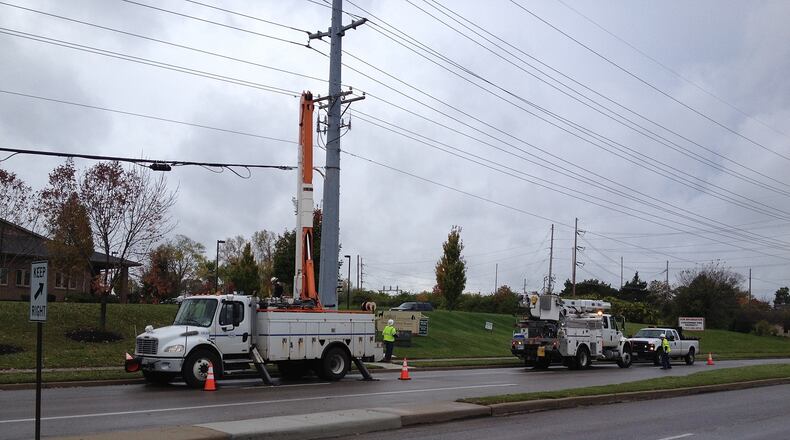AES Ohio’s five-year average at the time of the filing was 121.58 minutes, or just over two hours.
The case has drawn comments from PUCO staff and the Office of the Ohio Consumers’ Counsel (OCC), neither of which agree with AES’s application, said Matt Schilling, a PUCO spokesman.
The next step is a PUCO hearing, which has not been scheduled. “The parties to the case — PUCO staff, OCC and the utility — may decide to engage in settlement discussions, but I do not know if they will come to any agreement and can’t speculate,” Schilling said in an email Tuesday.
He did not have a timeframe.
AES Ohio (formerly Dayton Power & Light) has proposed a “CAIDI standard” or “Customer Average Interruption Duration Index” standard of nearly two hours and 20 minutes, or 139.82 minutes.
In accepting that standard, the company asked regulators to include transmission outages but exclude “major event days.”
According to a PUCO comparison of the industry standard in average minutes of customer power interruption and AES Ohio’s performance, the local utility’s performance in 2020, the most recent year available, was an average of 132.17 minutes, down slightly from 133.29 in 2019, compared to an industry standard of 125.04 minutes.
A representative of AES Ohio said the standards in place today are nearly a decade old and are based on data even older, from 2009 to 2011.
“Since that time, attributes of the company’s distribution system have changed as AES Ohio continued to perform its annual maintenance programs and conduct proactive investments in strengthening the distribution system,” said AES Ohio spokeswoman Mary Ann Kabel.
Damage caused by tree limbs falling on company’s lines and growing expenses tied to basic maintenance — with rates based on 2015 expenses — have made reliability a “challenge,” she said.
“The company’s application was made to bring the performance standards in line with the company’s current system and configuration,” Kabel said.
The utility also told the PUCO it surveyed residential and small business customers in 2020 and found mostly favorable results.
AES Ohio said 76% of residential customer survey respondents said in 2020 they were “very satisfied with the reliability of their electric service,” with another 18% saying they were “somewhat satisfied.”
And 77% of business respondents were “very satisfied” with the reliability of service with an additional 16% agreeing they were “somewhat satisfied,” the company said in a PUCO filing.
The consumers’ counsel portrays the case as one in which AES Ohio is asking the commission to “lower its standards that it must meet for service outages, regarding the reliability of its electric service for consumers.”
“DP&L has been falling short of providing consumers with the protection the PUCO expected from electric outages,” the OCC said in a May 2 filing with the PUCO. “So instead of reducing electric outages and restoration times, DPL’s proposed solution is to reduce the PUCO’s standards. That’s the wrong approach for Dayton-area consumers.”
Nationwide, electric-grid operators are warning that power-generating capacity is struggling to keep up with growing demand, a situation that could lead to “rolling blackouts,” especially during heat waves, according to a May 8 Wall Street Journal story.
AES Ohio told the PUCO in a filing that its West Central Ohio service area is an “expansive 26-county mix of urban areas, suburban areas, and rural areas, some of which includes areas with significant numbers of trees near distribution lines.”
The company cited a number of challenges in restoring power quickly, including public accidents, weather events, planned outages and “hazard trees.”
“Due to the increasing frequency of whole tree and large limb failures in connection with issues such as the Emerald Ash Borer, the company is experiencing more catastrophic and damaging vegetation impacts which have contributed to a 21% increase in average outage duration,” AES Ohio told the PUCO last year.
About the Author

